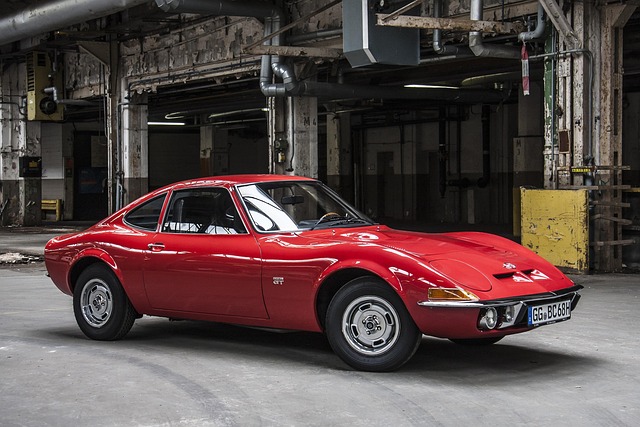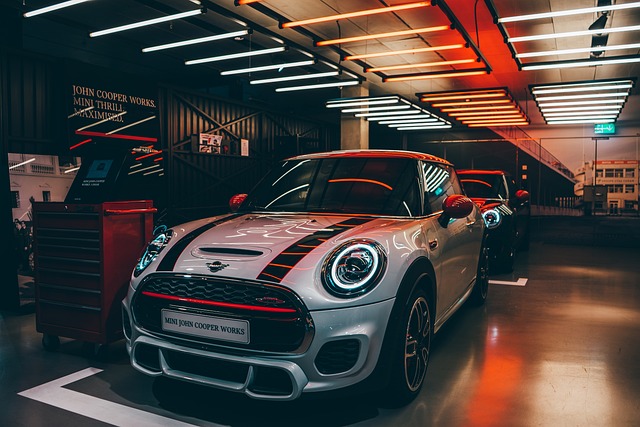What are the perfect wheels and tire combinations for daily drivers and weekend warriors that balance a blend of comfort, grip, and durability? Most drivers opt for alloy wheels in the 16–18 inch size range as a good compromise between handling, looks, and price. For tires, reliable all-season options provide consistent traction and comfortable driving experiences in a majority of conditions. These combos hit the sweet spot for city jaunts, long drives, or speedy weekend getaways. It helps to choose tire and wheel sizes that fit your car’s specs to be both safe and easy. Below sections provide more information on proper sizes and maintenance tips for daily and weekend driving.
Key Takeaways
- Understanding your driving style is the first step in choosing wheels and tires that provide the right balance of performance and comfort—whether you’re a daily driver, a weekend warrior, or something in between.
- Daily drivers want tires with low road noise and high treadwear ratings, and wheels that provide a smooth, comfortable ride with equal parts style and reliability.
- Weekend warriors can use wheels and tires that optimize for grip, handling, and acceleration, featuring performance-oriented tires and lightweight wheels, yet still factor in the durability required for occasional track or off-road adventures.
- Hybrid users should look for tire and wheel combinations that combine all-weather performance, durability, and comfort so they can safely enjoy their drive in any condition.
- Wheel size, offset, materials, and construction methods all play a huge role in vehicle handling, aesthetics, and long-term durability. Knowing these factors is important for making informed decisions.
- Regular installation, alignment, and maintenance are key to getting the most out of your tires in terms of lifespan, safety, and consistent performance on all road types and vehicles.
Define Your Driving Persona
Selecting the perfect set of wheels and tires begins by defining your driving persona. Your daily commute, weekend excursions, and general driving all define what is most important—comfort, traction, fuel efficiency or longevity. Even your car factors in – because not every tire fits every car! Aligning your tire selection to your needs and vehicle type ensures you receive the optimal balance of performance, safety and comfort.
The Daily Commuter
Comfort and low road noise define the perfect tire for commuters. Days on pristine asphalt demand a hushed, plush ride. Good on-road tires, but strong enough to withstand the odd pothole or gravel road, work best. They’re a handful of drivers who still desire a touch of off-road prowess if their path turns, but the bulk prize comfort and tranquility inside the cabin. For wheels, a straightforward design with ample sidewall height assists in cushioning bumps, but still provides some flair.
Key tire features for commuters: * Low rolling resistance for great fuel economy.
- Quiet treads
- Reinforced sidewalls for pothole protection.
- Long tread life warranties
Selecting a tire that keeps expenses minimal but maintainability maximal is uber savvy for your daily driver. Avoiding aggressive tread patterns maintains comfort and reduces road noise, so you savor every mile.
The Weekend Warrior
Weekend warriors require more grip and sharper handling than city commuters. High-performance tires with sticky compounds and aggressive tread patterns allow you to really lean into mountain roads. Lightweight wheels reduce unsprung mass, enhancing acceleration and steering feedback. These drivers tend to want a sportier look, so bold wheels with sharp designs are typical. If you’re spending some weekends on gravel or dirt or even track days, durability matters—look for tires rated for high loads and strong sidewalls.
Aggressive treads tend to get better traction on loose or wet surfaces but are often louder on pavement. For path breakers, puncture resistance and sidewall robustness rule. Yet each additional kilo of wheel or tire mass can bog down responsiveness and hurt fuel economy.
The Hybrid User
Hybrid users require a combination of both worlds. Tires have to remain quiet and comfortable for weekdays, but still be able to handle spirited drives on weekends. Opt for all-seasons with neutral tread that performs equally well on wet and dry pavement. A medium tread pattern keeps noise down but still grips when you need it. Wheel selection should be a marriage of both fashion and function—light so it responds quickly, but tough enough for rougher surfaces.
Some hybrid drivers gravitate to tires with reinforced sidewalls for protection, while others choose all-terrain types that deal with snow and rain effectively. Comfort and performance are both achievable, it typically implies opting for gear engineered for multi-purpose.
The Best Wheel and Tire Combos
There’s a delicate dance involved in selecting the best wheel and tire combos for daily drivers and weekend warriors dedicated to track days, balancing comfort, grip, style, durability, and price. The right decision for you varies based on your driving style, weather, landscape, and resources. These setups cover the core styles for hobbyists and riders.
The Comfort-Focused Commuter
For drivers who log hundreds of miles a week, comfort is king. Opt for soft compound, high treadwear rated tires, which dampen road noise, absorb bumps, and go the distance. Mid-size diameter wheels (16–18 inches) maintain ride quality without appearing boring. Tires designed for touring and daily driving provide quiet, durable performance, while C-load tires offer a mix of dependability and comfort for occasional off-pavement excursions.
The Spirited Canyon Carver
Performance-oriented drivers enjoy tires designed for dry-tarmac grip and enhanced cornering. Lightweight, forged wheels reduce unsprung mass and improve steering response. Slight increases in tire width can boost grip without affecting fit. Tread patterns with large shoulder blocks maximize traction for spirited driving.
The All-Weather Adventurer
All-season tires are ideal for drivers who encounter shifting weather and hybrid terrain. Look for tread designs that expel water efficiently to reduce hydroplaning. For light off-road use, C-load tires provide a balance between road comfort and off-pavement durability. Tire sizes that fit your vehicle specifications ensure safe, efficient performance, while lighter tires optimize fuel economy and handling.
The Show-Stopping Stance
For those who prioritize style, low-profile tires and visually striking wheels enhance a car’s appearance. Fitment is critical—proper offset and width prevent rubbing while maintaining a flush stance. Quality tires paired with aggressive wheels improve both style and performance without compromising safety or grip.
The Track-Ready Performer
Track-focused drivers require tires designed for high-speed stability, maximum grip, and precise handling. Lightweight wheels assist with acceleration and responsive steering. Tread patterns, whether slick or semi-slick, maximize the contact patch for racing conditions. Some drivers choose tires with reinforced sidewalls for added durability, sacrificing a bit of comfort for toughness.

Wheel Selection Deep Dive
Wheel and tire selection influences not only how a car looks and performs on the road, but how it weathers the weekday grind and weekend hoots. Basic specifics–size, offset, material and how the wheel is constructed–count more than most people realize. All of these impact safety, comfort, and the style you display on the road.
Size and Offset
Compact cars typically use 15–17″ wheels for ride quality and fuel efficiency. Sports cars or those seeking a more aggressive appearance can move up to 18–20” wheels, but must balance ride stiffness and additional expense. Offset, the distance from the wheel’s hub to its centerline, affects how the wheel sits in the wheel well. Excessive positive offset pulls the wheel inward, negative offset pushes it out and risks fender rub or steering problems.
- Consult your car maker’s manual for recommended size and offset ranges.
- Select a wheel size that allows tires to clear brakes and fenders.
- Apply conservative offsets if you roll on rude roads or require max tire life.
- For staggered setups–wider rear wheels–maintain front/rear diameter within 2% to prevent traction control faults.
Staggered setups, popular on rear-drive cars, put wider wheels out back to increase grip and aesthetics. That’s great for weekend track use, but it could push tire expenses over the top as time goes on.
Material Matters
Aluminum wheels, lighter than steel, that help save fuel and sharpen steering. Steel wheels are less expensive and laugh off potholes, but their heaviness can deaden handling. Lightweight alloys, such as flow-formed aluminum, increase speed and cornering for more aggressive drivers.
A few brands provide forged aluminum for both strength and low weight, but this bumps up the price. For daily drivers, mid-tier alloys find a nice middle ground between cost and appearance. In wet or salted environments, select wheels with strong corrosion resistance.
Construction Methods
Cast wheels are created by pouring metal into molds, simple to produce in high volumes and economical, however bulkier and weaker. Forged wheels are pressed from solid blanks under extreme pressure, making them lighter and stronger, but significantly more expensive. Flow-formed wheels fall in the middle, spun and stretched under heat for lighter weight and forged-like strength. High-end constructions such as multi-piece wheels weld together individual components for personalized performance and style, but are more expensive and require diligent maintenance.
For the majority, flow-formed wheels provide the optimal combination of weight, price, and durability. Cast wheels are OK for everyday, forged is best reserved for performance driving.
Tire Technology Unpacked
Tire technology that never stops evolving for the daily driver and those who require more for their weekend escapes. Choosing the best wheel and tire combinations required a close examination of new compounds, tread patterns and sidewall constructions. Both selections can impact how your vehicle hooks, halts and rides on the highway or path.
Tread Patterns
Tread’s what counts for traction on wet, dry or loose ground. Symmetrical patterns utilize blocks that repeat and function excellently with day to day urban driving, delivering very stable and quiet rides. Directional treads, recognized by their V-shaped grooves, bust through water quickly and slice through hydroplaning, so they’re fantastic for heavy rain or snow-covered pavement. Asymmetric designs mix big outer blocks for cornering grip with inner grooves for wet handling, a great fit for those who combine city, highway and light off-road use. All-terrain tires with deep, open lugs can ‘bite’ snow, sand and rocks, but their 43-pound weight and aggressive shape could cause more road noise and less comfort. Tread depth is important as well, as deeper grooves wear longer and displace more water, but can make steering less precise. Certain all-seasons can give you 80,000 miles demonstrating through its tread design and compound how it helps save money and time for the long distance drivers.
Compound Choices
It’s the mix that makes the tire. Softer compounds stick like glue but wear out quickly, whereas harder blends endure longer but can slide on slick or cold pavement. Silica in the blend increases grip in rain and snow, so many all-terrain models incorporate it for improved all-weather performance. Motorists requiring a combo of comfort and long tread-life might select touring tires, calibrated for consistent traction and smooth rides. Others may require an even tougher rubber compound for rough terrain or heavier loads. Load E tires are significantly stiffer but feel harsh and can weigh up to 60lbs for large 33-inch models. Matching the compound to your route, weather and load helps get that best value/feel.
Sidewall Secrets
Sidewall build forms how a tire flexes and protects itself. Stiff sidewalls provide sharp steering and prevent sidewall flex when cornering, but make the ride harsher. Many off-road enthusiasts would prefer aggressive, rock- and rut-resistant sidewalls, even if that comes at an added weight or stiffness penalty. Taller sidewalls, like on 265/75 r16 tires, aid in absorbing bumps and allow you to lower air for extra grip off road, but can appear bulky and potentially sway more in turns. Others mix support and flex, utilizing laminated cords to protect from cuts, yet maintain some flex for comfort. The optimal sidewall selection comes from aligning your velocity, road surface, and appetite for aesthetics or security.
The Unspoken Trade-Offs
Reconciling your weekday commute with your weekend off-road or redlined adventure requires a thoughtful approach to tires and wheels. Each choice defines your behind-the-wheel experience—impacting comfort, expenses, durability, and efficiency in various terrains.
Noise vs. Grip
Tire design influences road noise and traction. More aggressive tread patterns like mud or all terrain tires increase off-road bite but tend to increase cabin noise. Mud tires are too loud for everyday use for some drivers, and they’ll wear out in 42,000km. Conversely, highway/touring tires provide quieter rides, lower rolling resistance, and increased comfort at the cost of off-road bite.
Softer tread compounds and wider grooves enhance grip, particularly in snow or loose gravel, but commonly increase noise. Tread pattern matters: symmetrical or asymmetrical designs help minimize noise while keeping traction safe in the wet. Highway and light-offroad tires can strike a sweet spot–comfort and grip without displacement. For those emphasizing silence, low-profile tires with continuous center ribs typically decrease hum while providing excellent road hold.
Weight vs. Strength
Wheel weight alters how a car feels and reacts. Lighter wheels and tires enable a vehicle to accelerate faster, turn more sharply, and brake more easily. Others have trimmed 4 kilos per corner, observing improved steering and reduced suspension component stress. Light can translate to less durability, particularly in hard use off-road or on rough urban streets.
For example, materials such as forged aluminum provide a combination of lightweight and strength that facilitates both everyday and aggressive driving. Heavy-duty steel wheels absorb abuse but weigh a lot, which can sap response and fuel economy. Weight savings increase fuel economy, particularly on long commutes.
Cost vs. Longevity
|
Tire Type |
Average Price (USD) |
Expected Life (km) |
Durability |
Notable Trade-Offs |
|
Touring |
$100–$170 |
60,000–90,000 |
High |
Less off-road grip |
|
All-Terrain |
$150–$270 |
50,000–70,000 |
Medium |
More noise, moderate off-road |
|
Mud-Terrain |
$200–$350 |
40,000–50,000 |
Low–Med |
Loud, short life, best off-road |
|
Performance |
$180–$400 |
30,000–60,000 |
Medium |
Expensive, grips well on pavement |
Budget tires might do for the city, but you’ll likely not last as long or provide optimal control. Quality tires are pricier, but distribute that price among more miles and usually provide a more comfortable, secure ride. Flexible payment or financing options could help make the higher-quality combos more accessible, particularly for younger drivers still building careers.

Installation and Maintenance
Selecting the perfect wheels and tires is merely half of the story for both daily drivers and weekend warriors. Nothing beats a professional installation and routine maintenance to get the most out of the life, safety, and performance of any setup! Improper mounting or missed maintenance can cause uneven wear, vibrations and even danger, affecting both the driving experience and the life of your investment. Good alignment and tire health checks keep performance, efficiency and safety at their optimum. The below sections outline the key actions and things to consider for installation and maintenance.
Proper Mounting
Mounting tires right is about more than just slapping rubber on a rim. Bad mounting results in issues such as uneven wear or strange steering feel. The wheel and tire have to be the same. Tighten lug nuts with the proper torque, according to manufacturer’s specs. Torque wrench, not just a regular wrench, or you’ll have warped rotors or damaged threads.
Use professional mounting and balancing, particularly with performance or low-profile tires. Shops have machines that get the tire bead to sit properly on the rim, which is important for air-tightness and smooth ride. If the bead isn’t seated correctly, you’ll experience air leaks or ride disruptions. Tiny errors in this area can cause huge trouble down the road.
Regular Rotation
When you rotate your tires, you keep tread wear balanced — so your tires last longer. Most cars profit from a rotation every 8,000 to 10,000 kms, though more hard driving or heavier vehicles may require it sooner. Measure track tread depth with a gauge, not just your eyeballs, to determine when to rotate. This allows you to detect wear patterns sooner.
Different cars require different rotation patterns. For instance, front-wheel-drive cars typically employ a forward cross, whereas sports cars with staggered setups might require something different. Check with your manual or a reputable mechanic for your optimum alternative. Rotations and patterns should correspond with your driving style and tire variety.
Alignment Checks
Alignment is more than a shop upsell. Bad alignment wears tires out quickly and causes the car to pull. Plan checks at minimum annually, or post-impact with a large pothole. Even slight misalignment can damage both tire life and your car’s safety.
Professional alignment uses specialized machinery to fine-tune toe, camber, and caster. This keeps tread edges sharp and ensures tires hit the road as engineered. For hard-driven weekend warriors, extra checks keep performance on point. If your steering wheel is off-center or you have uneven tire wear, have it checked sooner.
Conclusion
To select the right wheels and tires, begin by observing your weekly driving habits. City trips and long miles require strong, quiet tires and wheels that stand up. Short, quick weekend rides favor lighter, sportier setups. Go with a basic 5-spoke aluminum wheel wrapped in a mid-range all-season tire for your daily driver. For weekends, a sport tire with a lightweight rim provides superior corner grip. So just check the tread and pressure often. Wash the wheels after it rains or is dirty. Easy attention keeps them keen and secure. Keep your ride smooth and swap worn parts fast. Post your best combos or tips to other drivers! The road shifts, but wise picks put you above it all.
Frequently Asked Questions
1. What makes a good wheel and tire combo for daily drivers?
One that balances comfort, safety and durability is a good combo. The best wheels and tires for a daily driver / weekend warrior depend on your climate and local routes.
2. Are larger wheels better for weekend warriors?
While larger wheels can enhance handling and aesthetics, they might compromise ride comfort and increase tire expenses. Think about your driving needs prior to tweaking.
3. How do I select the right tire size for my car?
Look in your car’s manual for suggested sizes. Select tires that complement your driving style and suit your local roads for the best results.
4. What are the main benefits of all-season tires?
All-season tires provide dependable grip in the majority of conditions and have a longer lifespan than their specialized counterparts, perfect for daily driving.
5. What are the trade-offs between performance and comfort?
Performance tires provide improved grip and handling but can ride stiffer and may wear quicker. Comfort-oriented tires provide a more cushioned, silent experience.
6. How often should I replace my wheels and tires?
Inspect your tires every 40,000–80,000 km for wear. Swap wheels if banged up or not safe anymore. Routine checks keep you secure.
7. Can I install new wheels and tires myself?
You could, however professional installation guarantees appropriate balancing and alignment. This aids in preventing irregular wear and increases safety.
Ready to Customize Your Ride? Let’s Make It Count.
Your car should feel like it’s yours, inside and out. At autoTECH Blackhawk, we don’t just fix vehicles — we help you personalize them, enhance performance, and create a ride that matches your style every mile of the way.
Whether you’re looking for upgraded wheels, custom lighting, performance tuning, or interior upgrades, we’ve got you covered. Our expert techs use only top-quality parts and trusted installation methods, and every customization is backed by our industry-leading 3-year/36,000-mile warranty.
Not sure what fits your car or your lifestyle best? We’ll walk you through the options and help you choose upgrades that deliver both style and function.
Fast. Friendly. Reliable.
Schedule your customization consultation today and see why drivers across the Bay Area trust autoTECH Blackhawk to bring their vision to life.
Book now at autoTECH Blackhawk or give us a call — let’s turn your car into something unforgettable.


